Order: Columbiformes
Family: Columbidae
Genus: Streptopelia
Species: Streptopelia decaocto
Introduction:
The Eurasian Collared-Dove is an introduced species from Eurasia. During the mid-1970s, a pet store in the Bahamas had multiple individuals escape, then decided to release their remaining 50 doves (Henceveld, 1993). By the 1980s, the first individuals were found in North America in Florida (Henceveld, 1993). Since this time the bird has spread across the lower 48 states and made its way to Washington State (Henceveld, 1993). Since this time the bird has become a fairly common, year-round resident (Ebird). They are often found alongside and are mistaken for, the native Mourning Dove. Concerns have arisen regarding the Eurasian-Collared Dove and the impacts they may have on native species in Washington, specifically the previously mentioned Mourning Dove.
The Eurasian Collared-Dove is about 12 inches in length and has a wingspan of about 21 inches (Shewey, Blount, & Herlyn, 2017). The dove is similar in plumage between the sexes. The males do not molt their common plumage for breeding plumage but remain the same throughout the year (Shewey, Blount, & Herlyn, 2017). The dove is overall a pink/buff color, with darker remiges and rectrices. The ventral side of the rectrices is a dark grey from the base to the middle of the feathers. Their most defining feature is their black, crescent-shaped collar on the nape of their neck. Some birds have a very defined white eye-ring, in others, it is less noticeable. This species is often confused with the very similar Mourning Dove. The most noticeable difference between the two is the black “collar” of the Eurasian Collared-Dove, along with them being slightly larger, paler in color, and a squared off tail.
The Eurasian Collared-Dove is thought to be native to India, Sri Lanka, and Myanmar before expanding its range into Turkey and the Balkans in the 1600s (Romagosa, Mceneaney, 1999). It is unknown how this range expansion occurred, but is possibly from human introduction or natural movement (Romagosa, Mceneaney, 1999). From here the dove’s range expanded across Europe, arriving in Yugoslavia in 1912, Germany in 1949, and Great Britain by 1955 (Romagosa, 1999, Lachmund, 2015). Due to the dove’s popularity with breeders, a store in the Bahamas carried them. In 1974 during a robbery of this store a few individuals escaped, and not long after the owner released the remaining 50 Collared-Doves (Henceveld, 1993). A separate population was released in Guadeloupe in the mid-1970s due to an impending volcanic eruption (Romagosa, 2012). From here the species made its way to Florida, with the first sighting occurring in the early 1980s, and then across much of the North American continent (Romagosa, 2012).
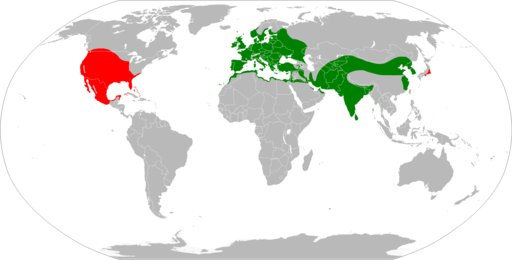
Eurasian Collared-Dove Range Map Osado [CC BY-SA 4.0 (https://creativecommons.org/licenses/by-sa/4.0)]
The Eurasian Collared-Dove can be found in much of the United States, Mexico, and Canada. Their range reaches from southern Mexico all the way to northern British Columbia and the interior of Alaska (Ebird). This Collared-Dove is not present in much of the northeastern United States.
Based on species maps from eBird.org I found that in the United States, the species’ relative abundance is highest in areas with a lot of open and dry farmland, such as Texas, Oklahoma, Nevada, and eastern Oregon and Washington. The dove avoids more mountainous areas and is rare to not present in the northeastern United States. In Western Washington, the bird can be found from the Canadian border down to the Columbia River, avoiding much of the Olympic Peninsula and the Cascade Range. In Washington State as a whole, the dove makes up about 2% of the seasonal North American bird population and has a mean relative abundance of 1.52 (Ebird).
Trends in relative abundance for this species in Washington show a fairly high increase from 2007 to 2016 in the southeast, southwest, and northwest areas of the state during the breeding and non-breeding season (Ebird).
In North America, the Eurasian Collared-Dove prefers more open environments such as farmland and suburban areas where grain availability from agriculture and backyard bird feeders tends to be high and roosting and nesting sites are available (Veech, Small, & Baccus, 2011). In general, the bird uses southern magnolias and live oak for nesting and roosting, but have been observed roosting in buildings, including barns (Romagaso, 2012). In Washington State, these birds will use native trees such as Big-leaf Maples for nesting, and telephone poles and wires for roosting. These birds tend to avoid highly populated areas and agricultural land that is heavily used, along with heavily forested sites (Romagaso, 2012).
Overall it has been found that this bird is not generally present in areas unaltered by humans (Fujisaki, Pearlstine, & Mazzotti, 2010), and one recent study out of Mexico found that habitat with the Eurasian Collared-Dove had an overall less diverse dove community than areas where they were not present (Camacho-Cervantes & Schondube , 2018 ).
In Washington State, most of the population favors cropland, with urban and built-up areas coming in second as favored locations (Ebird). They avoid forested areas, especially evergreen needleleaf forests, and areas over open water (Ebird). In Thurston County, individuals are often seen in parks, housing complexes, and farmland (Audubon).
The Eurasian Collared-Doves’ combination of a long and slender bill and pecking behavior allows them to effectively and quickly take up seeds without the need to husk seeds. The dove generally forages on the ground under bird feeders and in areas where grain is stored and fed to animals (Romagaso, 2012). They will also feed on elevated bird feeders if they are sturdy enough to take their weight. The mean pecking speed for this species is recorded at 21.6 pecks/15 seconds (Romagaso, 2012). Foraging in areas such as parking lots allows the birds to obtain the grit they need for their grinding up the seeds which they swallow whole (Romagaso, 2012). Hovering over bushes via quick wing beats is how they are able to obtain berries (Romagso, 2012).
Eurasian Collared-Doves feed primarily on grain found in agricultural areas or from food in backyard bird feeders. Cereals and seeds like sunflower, millet, milo, and wheat make up their diets but have been known to eat peanuts, crushed pecans, crackers, and bread (Romagso, 2012). Individuals in this species have also been observed eating gravel and berries from a Dahoon Holly (Romagso, 2012). In Europe, they are known to eat rye, barley, mustard seed, knotgrass, elderberries, and on occasion invertebrates such as flies and their larvae and termites (Romagso, 2012).
Grain preference was determined in a cafeteria-style presentation of food to Eurasian Collared-Doves and found that milo was the first choice for the birds, with millet, maize, sunflower, and wheat as their second through last pecks, respectively (Poling & Hayslette, 2006).
The song of the Eurasian Collared-Dove consists of a series of coos in rapid succession, generally two short coos followed by a drawn-out coo. The call is a slow reeeh reeeh noise.
The song and calls from the Eurasian Collared-Dove can be heard in this audio clip.
Audio PlayerThis audio is of the dove’s call during flight.
Audio PlayerIt was found that a territorial vocalization called the “perch-coo” are made by these doves (Cate, Slabbekoorn, & Ballintijn, 2002). Larger males are able to suddenly increase the frequency of the three parts of this song, which requires a greater respiratory capacity to produce (Cate, Slabbekoorn, & Ballintijn, 2002). Because of this, songs with greater modulation, as the frequency increase is called, elicit stronger responses from other individuals (Cate, Slabbekoorn, & Ballintijn, 2002)
The Eurasian Collared-Dove is a year-round resident of Washington state and North America (Romagso, 2012) A large part of their food source comes from bird feeders, allowing them to stay remain residents even in areas with a colder climate (Romagso, 2012). The males pick the nesting site and bring material to the female, who builds the structure. Nest usurpation by the Eurasian Collared-Dove of an American Robin nest has been observed (Kasner & Pyeatt, 2016). The nest was occupied by the Robin, then briefly shared by the dove, before the dove became aggressive and took over the nest (Kasner & Pyeatt, 2016).
During the breeding season, male collared-doves fly at steep angles from a perch and makes loud wingbeats to attract potential mates (Usherwood, 2008). This display is very energy efficient, as only a 5% increase in basal metabolic rate is required for an hour of climbing and diving (Usherwood, 2008).
Females generally lay two eggs per clutch, with the first hatchling generally being larger in size than the others (Eraud, Jacquet, & Legagneux, 2011). They are incubated for 14-18, and after hatching, both parents remain until the babies leave the nest 115-20 days after hatching (Audubon). Before the young leave the nest, they are fed a substance called “pigeon milk”, which is a nutrient-dense liquid that functions in a similar way as milk produced by mammals (Yao Ma, et.al., 2018)
As this species is a non-native, concerns about conservation are focused on their potential impacts on native bird species in North America. More research is required in this area, but it currently does not appear that this species has a negative impact on native species, specifically the similar Mourning Dove based on findings from a 2006 study of their foraging behavior. This study found that both bird species picked corn seeds that were more narrow and short than the average corn seed. This is the only similarity between the two species’ seed-size preferences however as the Eurasian Collared-Dove consumes sunflower seeds that are more broad and thick than average and corn that is more thick than average. According to the paper “Eurasian Collared-Doves may select thicker and/or broader-than-average seeds to maximize foraging efficiency.” By contrast, the Mourning Dove selects sunflower seeds and corn that are average in size, which most likely limits foraging competition between the two species (Hayslette, 2016).
Camacho-Cervantes, M., & Schondube, J. (2018). Habitat use by the invasive exotic Eurasian Collared-Dove (Streptopelia decaocto) and native dove species in the Chamela-Cuixmala region of West Mexico. The Wilson Journal of Ornithology, 130(4), 902-907.
EBird – Discover a new world of birding… (n.d.). Retrieved March 14, 2019, from https://ebird.org/home
Eraud, C., Jacquet, A., & Legagneux, P. (2011). Post-Fledging Movements, Home Range, and Survival of Juvenile Eurasian Collared-Doves in Western France. The Condor, 113(1), 150-158.
Fujisaki, I., Pearlstine, E., & Mazzotti, F. (2010). The rapid spread of invasive Eurasian Collared Doves Streptopelia decaocto in the continental USA follows human-altered habitats. Ibis, 152(3), 622-632.
Hayslette, S. E. (2006). Seed-Size Selection In Mourning Doves And Eurasian Collared-Doves. The Wilson Journal of Ornithology,118(1), 64-69. doi:10.1676/1559-4491(2006)118[0064:ssimda]2.0.co;2
Henceveld, R. (1993). WHAT TO DO ABOUT THE NORTH AMERICAN INVASION BY THE COLLARED DOVE? Field Ornithology,64(4), 477-489. doi:10.1163/156853999501603
Kasner, A. C., & Pyeatt, D. N. (2016). Eurasian Collared-Dove (Streptopelia decaocto) Usurps Nest of American Robins (Turdus migratorius). Wilson Journal of Ornithology, 128(1), 198-200.
Lachmund, J. (2015). Strange Birds: Ornithology and the Advent of the Collared Dove in Post-World War II Germany. Science in Context, 28(2), 259-284.
Poling, T. D., & Hayslette, S. E. (2006). Dietary Overlap and Foraging Competition Between Mourning Doves and Eurasian Collared-Doves. Journal of Wildlife Management,70(4), 998-1004. doi:10.2193/0022-541x(2006)70[998:doafcb]2.0.co;2
Romagosa, C. M., & Mceneaney, T. (1999). Eurasian Collared-Dove in North America and the Caribbean. North American Birds,53(4), 348-353. doi:10.2173/bna.630
Romagosa, C. M. (2012). Eurasian Collared-Dove. The Birds of North America. doi:10.5040/9781472926999.0300
Shewey, J., Blount, T., & Herlyn, H. G. (2017). Birds of the Pacific Northwest. Portland, OR: Timber Press.
Usherwood, J. (2008). Collared doves Streptopelia decaocto display with high, near‐maximal muscle powers, but at low energetic cost. Journal of Avian Biology, 39(1), 19-23.
Veech, J., Small, M., & Baccus, J. (2011). The effect of habitat on the range expansion of a native and an introduced bird species. Journal of Biogeography, 38(1), 69-77. Retrieved from http://www.jstor.org.evergreen.idm.oclc.org/stable/40996132
Yao Ma, Siyuan Feng, Xun Wang, Izhar Hyder Qazi, Keren Long, Yi Luo, . . . Mingzhou Li. (2018). Exploration of exosomal microRNA expression profiles in pigeon ‘Milk’ during the lactation period. BMC Genomics, 19(1), 1-12.

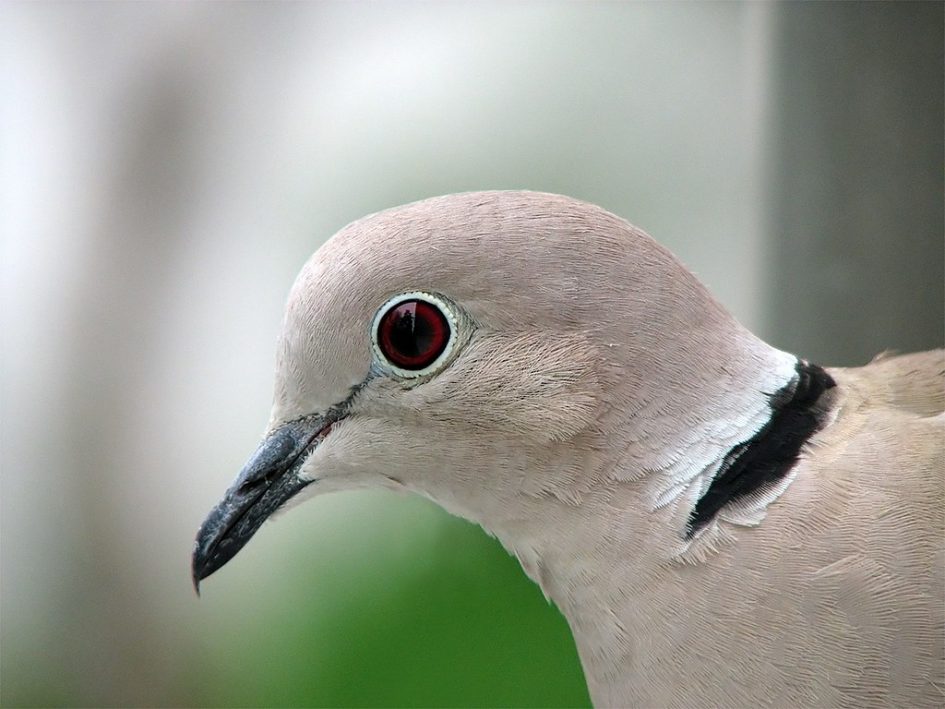
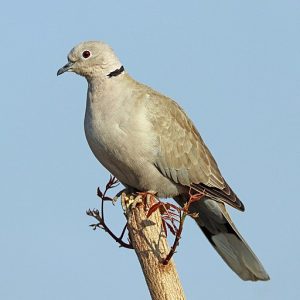
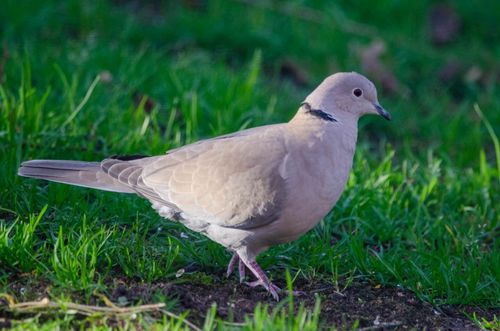

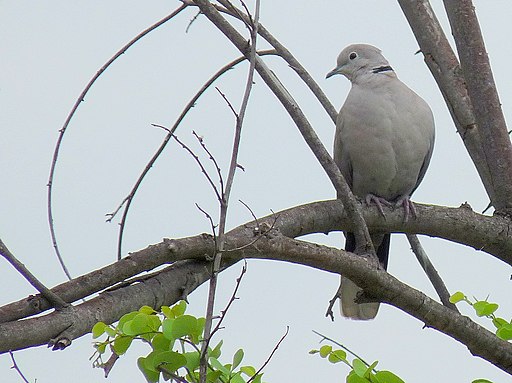
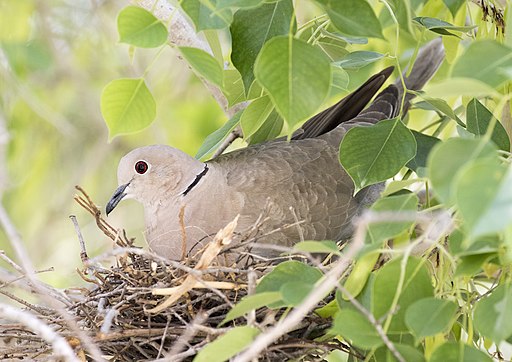
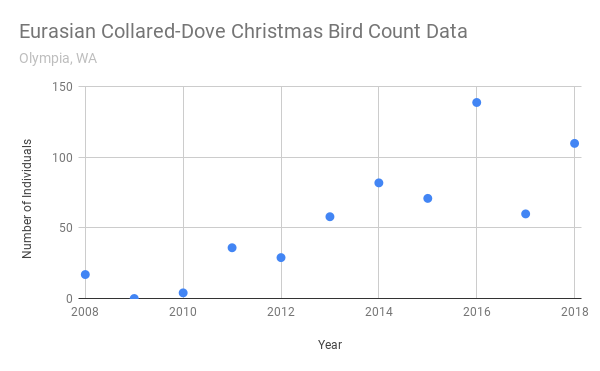








Leave a Reply